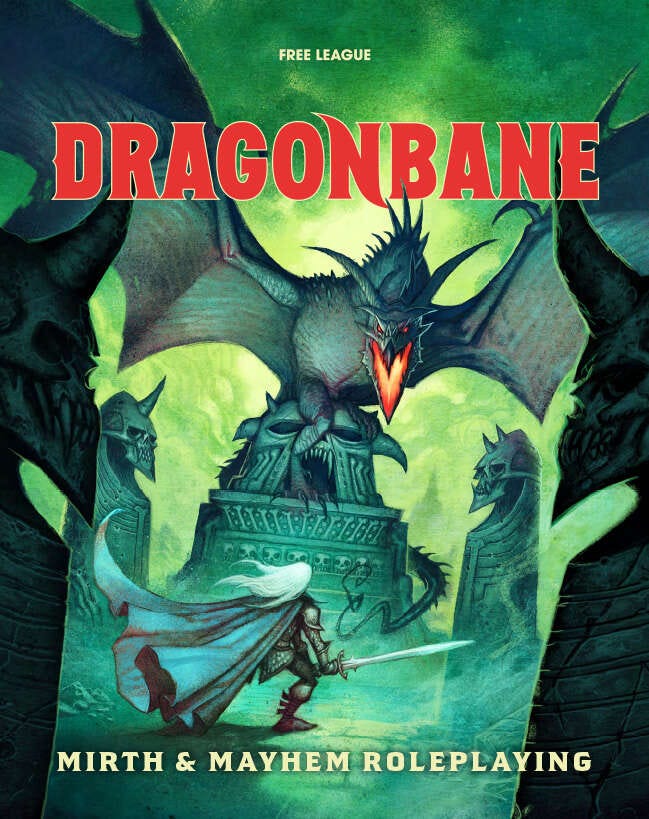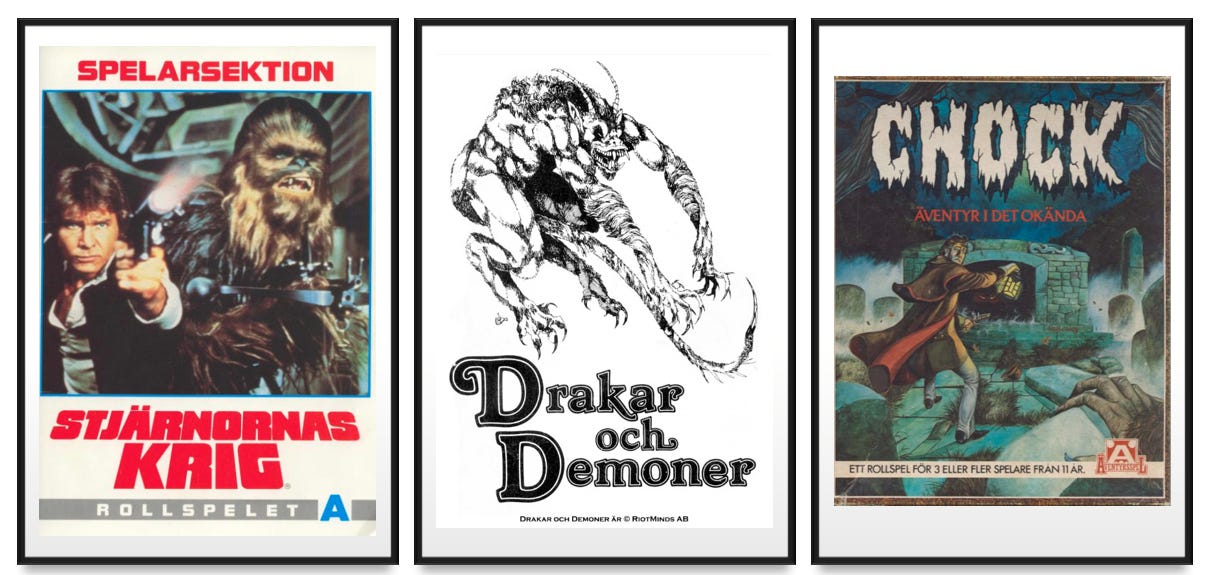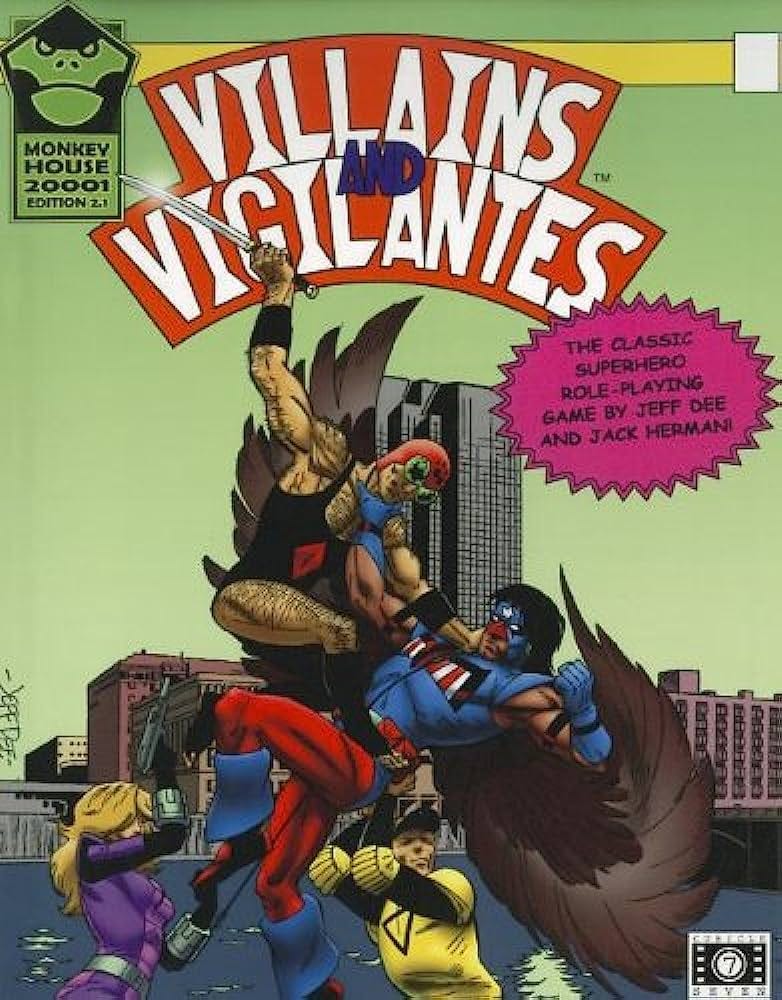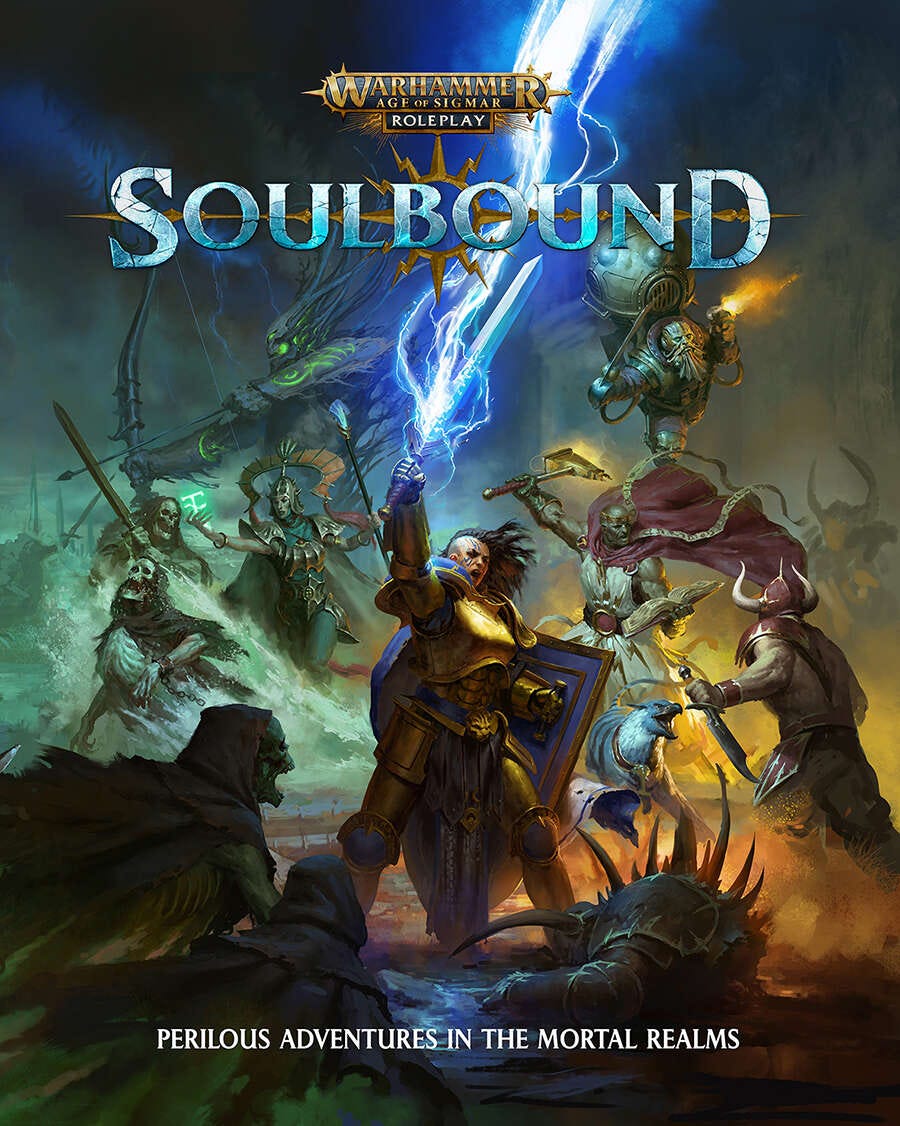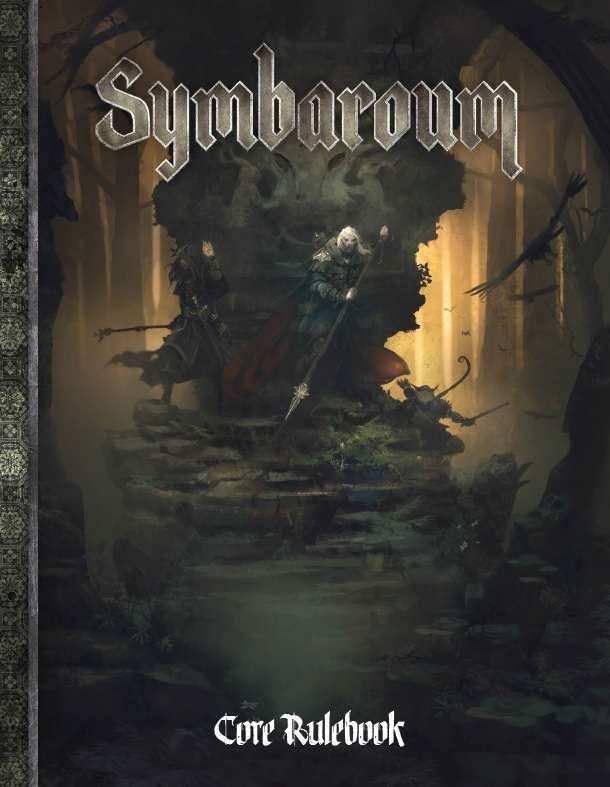Independent RPG Month 2025: Week Three Recommendations
Three Weeks of Independent Games and We Haven’t Even Started Delving into What’s Out There!
Since it’s still Independent Tabletop Game Month, and my thanks go out again to Professor Dungeon Master for creating the event, I want to make sure to get out my week 3 recommendations even though my family and I just got back from our vacation to Salt Lake City and the Lagoon Theme Park. The vacation took up a lot of my brain space in wonderful ways, so I won’t be including as many long descriptions of the history of the games I’m recommending. I’m still a bit foggy from Cannibal.
As always my official criteria for what constitutes an Independent RPG are:
That the game is not produced by Wizards of the Coast/Hasbro
That the game is not a D&D clone or directly D&D adjacent.
The game must be currently available for purchase in either print or pdf form from a legal seller.
Here is the list of games so far this month:
July 1 — Tunnels and Trolls
July 2 — Good Guys Finish Last
July 3 — Champions
July 4 — Dragon Warriors
July 5 — Troika
July 6 — Savage Worlds
July 7 — Castle Falkenstein
July 8 — Fantasy AGE by Green Ronin Publishing
July 9 — Inspectres from Momento Mori Tactics
July 10 — Warhammer Fantasy Roleplay 4th Edition
July 11 — Traveller by Game Designer’s Workshop
July 12 — Hero Kids
July 13 — Beach Patrol by Gallant Knight Games
July 14 — Runequest from Chaosium Games
And now for this week’s seven.
July 15 — Dragonbane from Free League
Dragonbane from Free League/Fria Ligan is the latest edition of Sweden’s equivalent to Dungeons & Dragons, in popularity, Drakar och Demoner. Drakar och Demoner is a fantasy role playing game heavily based on Chaosium’s Basic Roleplay Engine that underpins Runequest and Call of Cthulhu. The game was originally published by Target Games, a Swedish company founded in 1980 by Fredrik Malmberg, Lars-Åke Thor, Johan Arve, Klas Berndal, and Roger Undhagen as a game store. Like Games Workshop in England, Target Games quickly expanded into publishing and the company was active from 1980 to 1999, when the company filed for bankruptcy at the tale end of the collectible card boom.
Target Games produced role playing games, war games, and a collectible card game based on one of their most successful “meta” products went on to produce a number of excellent role playing and war games that have had significant influence on the overall role playing game market. Target Games is one of the most important publishers in the history of role playing games and Fredrik Malmberg is the Swedish equivalent of Ian Livingstone in my opinion. They released most of their roleplaying games under the Äventyrsspel (adventure game) brand and they published both in house and translated role playing games. Their in house games included Mutant, Mutant Chronicles (very different from Mutant), and Kult, while their translated games included Drakar och Demoner, Chock (a translation of Pacesetter Games’ Chill), Sagan om Ringen (a translation of ICE’s Middle Earth Role Playing), and Stjärnornas Krig (a translation of West End Games’ Star Wars Role Playing Game).
The original version of Drakar och Demoner was a fairly direct translation of Chaosium’s Magic World supplement for the Worlds of Wonder boxed set, with the primary difference being that Drakar och Demoner included rules from the Basic Role Play core rulebook in order to be a fully playable role playing game. One of the best places to see this is in the selection and translation of monsters included in Magic World. Take a look at how they translated Skeletal Guardians.
The game has evolved over the years and the latest edition, Dragonbane, shifts away from a percentile system into one that uses a 20-sided die roll below system. The basic mechanics are the same, but skills are now in 5% steps rather than including the possibility of individual percentages. Given that most skills and rolls in Drakar och Demoner were in steps of 5% to begin with, this change makes sense and it works smoothly.
When Target Games went out of business, Target founder Fredrik Malmberg formed Paradox Entertainment as an intellectual property management company. This IP included Target Games’ catalog, but quickly expanded to include the works of Robert E Howard and others. All of these brands were eventually brought together under Cabinet Entertainment which is managed by Fredrik Malmberg. That’s right, the publisher of Mutant Chronicles and a ton of really cool role playing games is the person in charge of the Conan brand right now and I think overall this means that Conan is in good hands.
Paradox Entertainment licensed the rights to Drakar och Demoner to RiotMinds in 2000 and sold the rights to them in 2005. RiotMinds produced a couple of versions of the rules including the Trudvang Chronicles and Ruin Masters role playing games before eventually these rights to Free League. The art is beautiful and I’ll have a more in depth review when my boxed set arrives (I’ve been using the pdf, but prefer physical).
July 16 — Villains & Vigilantes edition 2.1 by Monkey House Games.
There are three primary ways of emulating superheroes in roleplaying games, point based systems, level based, and narrative. Point based systems aim at ensuring that all characters are mechanically balanced. Characters are given an identical pool of points to build characters and campaign guidelines regarding what an “effective” character looks like. This is the approach that Superhero ‘44 (the first superhero RPG) and Champions used.
Other games attempt to allow for all players to have some impact while accepting the fact that hero power levels vary wildly. A game like Marvel Super Heroes (FASERIP) does this by having rules for characters ranging from street level martial artists to cosmically powered characters like the Silver Surfer. Through mechanics like Karma and tweaks on the edges like the mechanics for the various martial arts, the game tries to make it so that lower powered characters still matter in cosmic brawls. The results are a bit mixed in the original core rules, but get much better in the Advanced Marvel Rules.
More recent games have created strongly narrative systems that minimize differences in combat ability and focus on storytelling. Games like Smallville, Masks, and Marvel Heroic did using a modified version of either the Cortex+ system or being “Powered by the Apocalypse.”
July 16th’s selection, Villains & Vigilantes, has taken the second approach in all of its editions but it hit the ball out of the park with it’s second edition. The Monkey House Games Edition 2.1 published in 2010 is my favorite version of the game rules and it also happens to the one that is published by the creators. Find a copy. Buy it and play.
July 17 — Warhammer Age of Sigmar Soulbound by Cubicle 7.
As I argued last week, Warhammer games still count as independent because they are the work of an independent outfit and not the megalith that is Games Workshop. In this case, I chose their controversial Age of Sigmar setting. Many long time fans of Warhammer Fantasy, in both its Battles and Role Play versions, are very critical of the Age of Sigmar setting and dismissively call the Stormcast Eternals “Sigmarines,” referencing their similarity to Space Marines in 40k.
While I see that connection, especially in one of the sculpts for the Eternals, I find the connection between Stormcast Eternals and the Radiants of Brandon Sanderson’s epic Stormlight Archive series to be much stronger, and much more appealing. This is a relatively unique setting that uses interesting mechanics (I’ll give a full review later in the year) to create a fun experience.
July 18 — Masks: A New Generation
Sheesh. I love superhero role playing games. I’m not a big fan of Powered by the Apocalypse games in general because the math of the mechanics isn’t well thought out, they are too “jargony” in a hobby that has enough hard to understand jargon, and they don’t tend to acknowledge the fact that the mechanics are a modified version of Inspectres and FATE. All that aside, the pure love of the genre that comes across in the writing as well as the well thought out character archetypes make Masks a fun game to play.
I still think that the game is a little too jargony in mechanics. I find the use of the term “Moves” instead of abilities/actions to be unnecessarily obscure and I don’t like that Critical Role’s new game Daggerheart has also adopted this terminology. In play, I’ve found that “moves” tend to narrow down how players describe their actions in play because they use the “move name” rather than describe what they are doing. I’d much rather hear, “I attack it with my broadsword” a hundred times in a session than “I directly engage the threat” again and again and again.
July 19 — Mazes by 9th Level Games
Give me a game where the mechanics and setting blend together to create a unique experience and I’m all in. Mazes has an interesting polyhedral based system that connects which die (d4, d6, etc.) that a player’s character uses to resolve actions with a specific kind of play. All die rolling is done by players, like the next game, which makes the game easy to run and focuses play on the player characters and their actions rather than on NPC/Monster actions. The link is for the pdf, but track down a physical copy.
July 20 — Symbaroum by Fria Ligan
Did you ever want to play a game where the Dark Forest seemed really dark? That had a robust setting where the magic system and mechanics reflect a very particular world? That has mechanics that are player focused, players roll all the dice, and which has some of the most beautiful art in any RPG? If you answered yes to any of those questions, then Symbaroum is for you. It’s a fantasy setting that captures the dark mystery of older and more dangerous fantasy and merges it with a touch of Sword & Sorcery. Rich and thematic.
Symbaroum is a game that I keep going back to again and again for inspiration as I design my own game setting. It has the right balance of dire stakes and potential for high heroics and draws deeply on a very specific mythology to create a tight and moody setting with a very good mechanical foundation. Even including little oddities in translation, the game is easy to learn and understand and really fun to play.
July 21 — Leagues of Adventure from Triple Ace Games.
Paul “Wiggy” Wade-Williams is almost single-handedly the reason I came to love Savage Worlds as a game system. He was a prolific creator in the early days of that system and his ability to mash together ideas to create high concept adventures amazed me. I bought everything with his name on it and was never let down. After a while, he launched his own game company called Triple Ace Games and used the Ubiquity engine as the mechanics for a number of settings.
Among my favorites is Leagues of Adventure, a Steampunk game that perfectly captures the fun and excitement of the Secret Adventures of Jules Verne series or your Steampunk book/show of choice. It’s right up my alley and the Ubiquity system is easy to learn and requires only the dice you already have to play. You can use any sized die to resolve actions because all that matters is even and odd.




